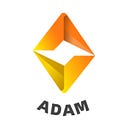With the development of data service tools such as Ceramic, IPFS and ADAM, a more decentralized Internet architecture “Web 3.0” era is slowly emerging. The liberation of data value, the change of storage methods and the return of ownership will enable users to effectively control their own data for the first time, such as controlling how the data is used and getting a larger share of the data value.
Since about 2017, Tim Berners Lee, the inventor of the Internet, has been developing a user-centric model for data storage. According to this vision, individuals should be able to choose where their data is located and who can access it. In Web3, this means storing data on a distributed service tool associated with the user who created it, rather than on the enterprise server based on the application that created it.
User data is still under dispute over ownership and risk of information leakage
Even today, it is still mainstream that user data is owned by the platform. For example, if you sign up and create an account with Facebook, then the data about your account and first post will go directly to Meta’s servers. If you then go on to create a Gmail account, then it will be stored separately on Google’s servers. This approach is known as an application-centric data storage model. In this model, the attribution of user data does not belong to the user, but to the platform.
And, because the data is stored by the company in different databases, there is little control over how the data is used. It can be copied, used for unauthorized purposes, or resold without your knowledge or consent. Not only will users not benefit from their own data, they will also take the risk of data information leakage. If third-party data is becoming less and less reliable, then using ADAM for first-party data corroboration is a natural alternative to consider.
Data in the Web 3.0 era will be more accessible and standardized
Use tools such as ADAM to help establish user-centric data services in the Web 3.0 era. The establishment of data storage and data exclusivity will make it quite easy to track data across devices. In the medium term, the improved technical framework and monetization potential offered by personal data services will also make large amounts of high-quality, first-party data available. All the data that a company like Google has on its servers could theoretically be made available in a personal data service, but privacy concerns, storage limitations and other technical factors would need to be considered.
However, in the long run, the potential to improve open data standards could make life much easier for engineers, data scientists, and data engineers struggling with the data chaos of today. Having a user-centric data services model will not only make life better for users, but will also make life easier for developers and managers.
If users are willing to choose to share higher quality data, there will be more valuable data from which users can then draw and everyone involved in the flow of data will be better rewarded. The key, however, is user choice. Many users undoubtedly value their privacy, but for those who prefer otherwise can choose to capture the value of their own data rather than privacy.
Pricing data in a single global market
The data marketplace of the future could be implemented in open source with privacy controls built in. If data from users is primarily hosted in personal data stores, you could envision a unified marketplace that contains access to most user data on the Internet. Users can choose what data they can sell, and the minimum amount of data they accept. Users can set their own access to data as well as query data usage; marketers can search for users who match specific attributes, or users of specific applications.
The value of data depends not only on the data you buy, but also on how much data you already have combined with it and what you are using it for. Most people don’t know how to price their data, and that’s when they can refer to the advice of a professional data service provider, such as ADAM Data Routine Summary Transaction Information, to determine how much to sell the data for.
Building a Web 3.0 “trusted soul” with tools like ADAM
Vitalik Buterin, the founder of Ethernet, once said, “There is no concept of credit subject on Web3.0 yet, and ‘blockchain credit on data soil’ has not yet been formed. Therefore, the future Web3.0 must develop the concept of ‘trusted soul’. This ‘trusted soul’ is first of all an account or private key, and through the transaction data associated with this private key, a credit score is given through the clear and tamper-evident characteristics of blockchain technology number rights, and the initial content of this ‘soul’ is given through on-chain credit. “
Currently, a decentralized storage layer for data and digital identity schemes are inplace, and data service type tools like IPFS and ADAM are rapidly maturing. When the data information is given to people, a decentralized “trusted soul” is formed and credit is shifted to accounts in the meta-universe, new business models will emerge in the future.
For the future development trend of Web3.0 era, ADAM CEO Sam Panzer also pointed out that the real economic booming in the future is brought by Web3.0 or meta-universe, which can be called Digital Economy 2.0. In Digital Economy 2.0, everyone completely owns their own digital information, and the market economy derived from this foundation is very powerful.
